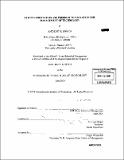Patient orientation and freedom to operate in the management of technology
Author(s)
Briggs, Anthony R. (Anthony Roman), 1974-
DownloadFull printable version (9.494Mb)
Other Contributors
Sloan School of Management.
Advisor
Eric von Hippel.
Terms of use
Metadata
Show full item recordAbstract
Can firms keep up with the pace of technological change? This thesis explores the idea that firms differ in their adaptive behavior, namely fast response to technological change, based on their relative resource allocation to different patent orientations. This thesis begins with a thorough review of theories of intellectual property, the development and use of patents and patent citations, and challenges in the accurate sampling of patents. Then, from a detailed analysis of patents in the photolithographic aligner industry, the thesis examines the extent to which firm patenting behavior is oriented towards (1) internal technologies (2) customer and supplier technologies (3) competitor technologies and (4) technologies that are assigned to peripheral firms outside of the core industry. It is shown that firms whose patent orientation focuses on internal technological development and competitor technologies are adaptive relative to the pace of technological change, whereas focus on customer of supplier technologies offers no adaptive benefits. These results imply that the patent systems may not just offer economic gains, by protecting internal technological development and establishing barriers to entry, but can also offer organizational gains. In particular, the results suggest that organizations focused on 'freedom to operate' from competitor patents are more adaptive.
Description
Thesis (S.M.)--Massachusetts Institute of Technology, Sloan School of Management, 2004. Includes bibliographical references (p. 153-164).
Date issued
2004Department
Sloan School of ManagementPublisher
Massachusetts Institute of Technology
Keywords
Sloan School of Management.